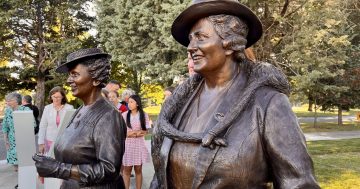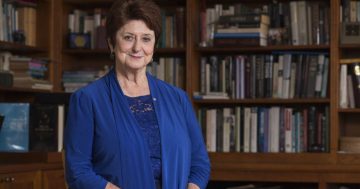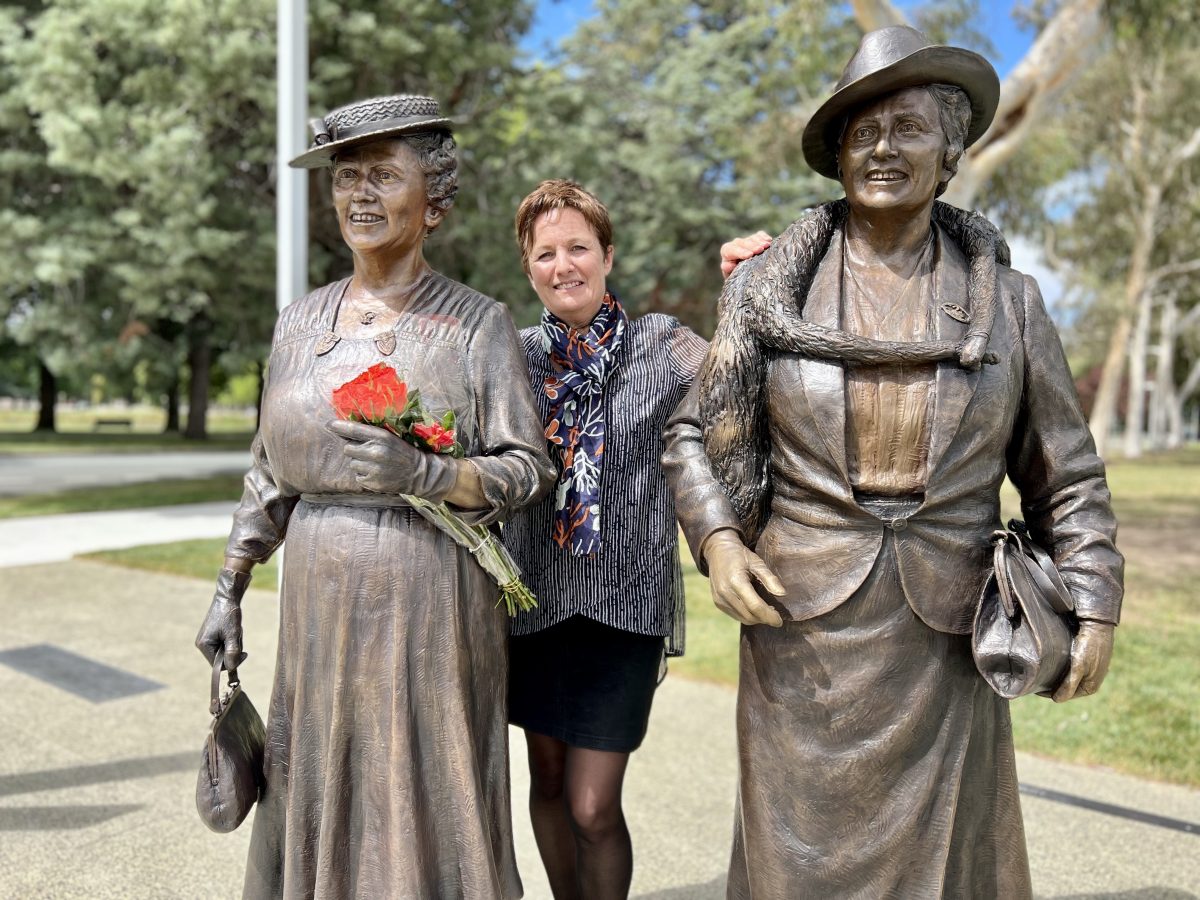
Sculptor Lis Johnson by her statues of Dame Dorothy Tangney and Dame Enid Lyons near Old Parliament House. Photo: James Coleman.
The first statue depicting females in the Parliamentary Zone was unveiled to a crowd of more than 200 family members, friends, female politicians and journalists for International Women’s Day last week.
The bronze sculptures are inspired by a photo of Dame Dorothy Tangney and Dame Enid Lyons walking through the doors of Old Parliament House in 1943.
Dame Dorothy, from Western Australia, was the first woman elected to the Senate, while Dame Enid, from Tasmania, was the first woman elected to the House of Representatives and the first woman to serve in Federal Cabinet.
Both were considered more-than-worthy trailblazers for an artwork that cost $800,000 and took three years to make. But it had us wondering, what exactly goes into making a sculpture? And how on earth do they make the clothes look so realistic?
As it’s located next to Old Parliament House, the project was handed to the National Capital Authority (NCA) as soon as the previous federal government approved it in early 2021. The NCA looks after everything around Parliament House and Lake Burley Griffin.
From here, it works in much the same way as any other government project in that it’s put out to tender, where ‘sculptors apply within’. But there was always one likely contender.
Lis Johnson has a “proven track record” with the NCA. The Melbourne-based sculptor is responsible for a sculpture of former Prime Minister John Gorton outside the building bearing his name, and one of Sir John McEwen, Australia’s ‘caretaker’ after Prime Minister Harold Holt went missing while swimming off a Victorian beach. This sculpture is located outside the House of Representatives Gardens.
“We all still had to go through a formal tender process by naming our prices,” she says.
“It’s a bit of a funny process from there because you kind of get the job, but also not really, until you’ve made a mini model of the sculpture.”
For this, Lis gets her hands on as many photos of the person as possible and liaises with surviving family members for the finer details. She pins these to the walls of her studio – even if it “makes me feel like a serial killer with pictures of victims on the wall” – and sets to work in clay.
“Obviously, you have to change a few things because the photo is a photo and a sculpture is a whole different thing in many ways,” she says.
For Dame Dorothy and Dame Enid, this meant adjusting a few minor things, like the fall of the hands to create a more natural pose. She also had to delve into medical records.
“Dame Enid had suffered a broken hip, which meant she always walked in quite a rigid way,” Lis says.
“One day, I noticed my own walk had changed because I imagine and embody the person I’m sculpting.”
Once the mini model is approved, Lis sets about scaling everything up 10 per cent larger than life in clay. It turns out life-size sculptures tend to appear smaller than they are, and these women were already hardly more than five feet tall.
She starts with the naked bodies to get the proportions right and engages a vintage clothing expert to source 1940s-style handbags, hats and clothing and provide advice on the weight and fall of each item.
“For instance, Dame Dorothy’s dress is made from crepe rayon, which barely exists anymore,” Lis says.
“It has a certain way of swishing when you walk, which you probably wouldn’t notice, but people who know vintage clothes recognise it straight away. The women also didn’t wear bras in those days – all these things I wouldn’t have thought of.”
Real-life models don the outfits while Lis copies what she sees, still in clay.
“Then it’s just a matter of refining and refining and refining.”
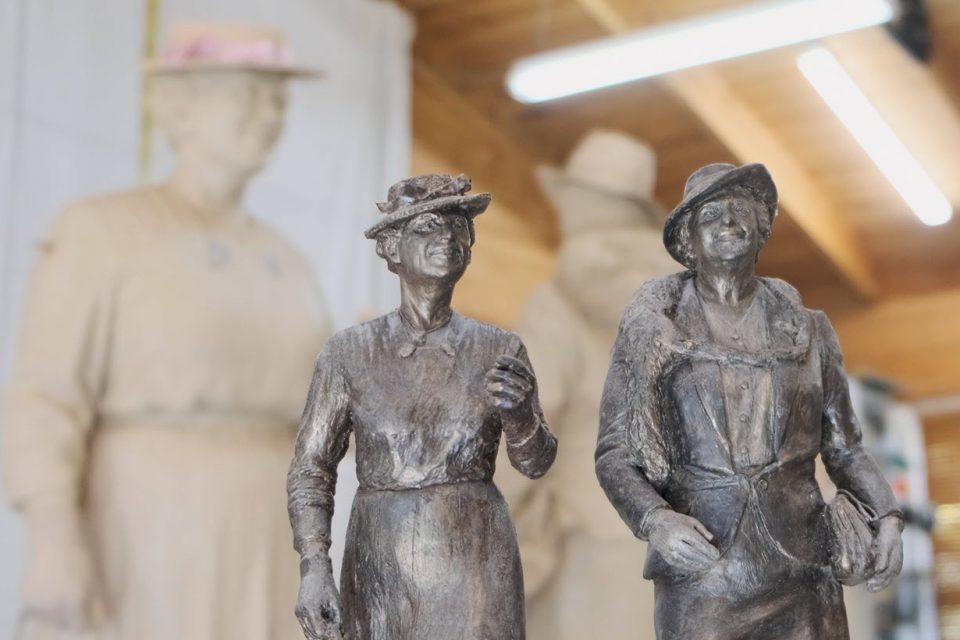

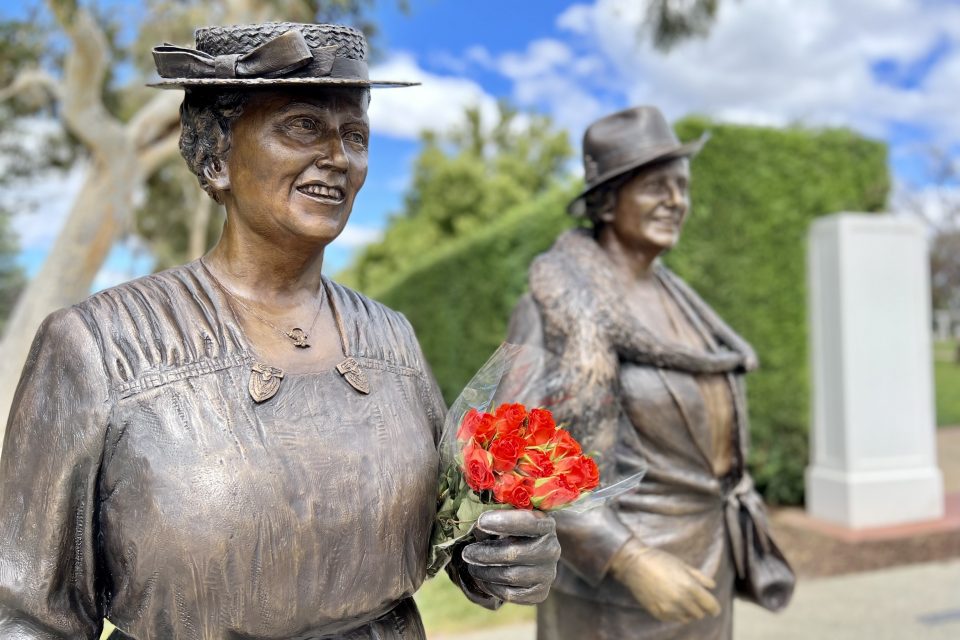
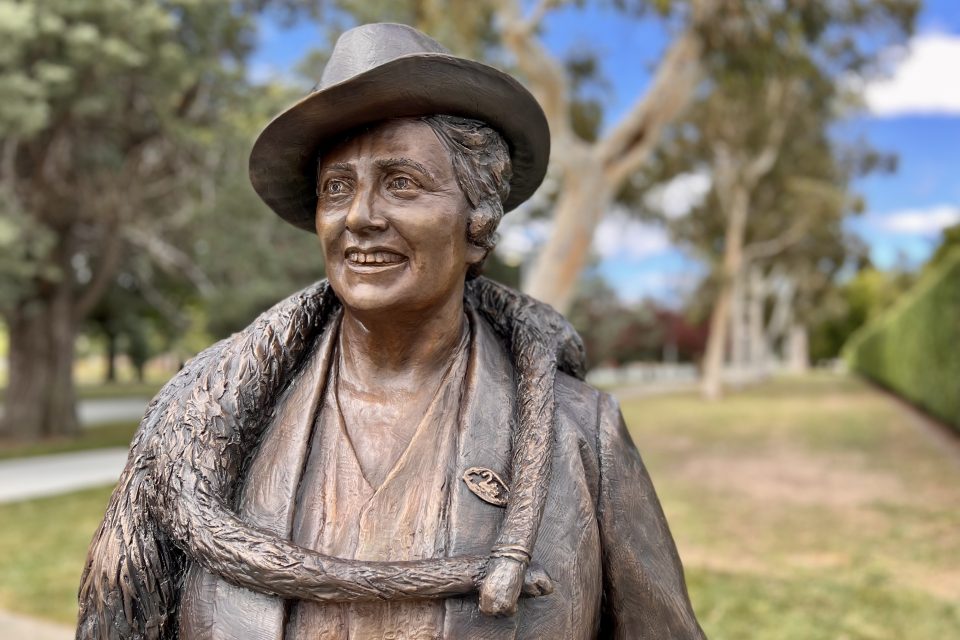

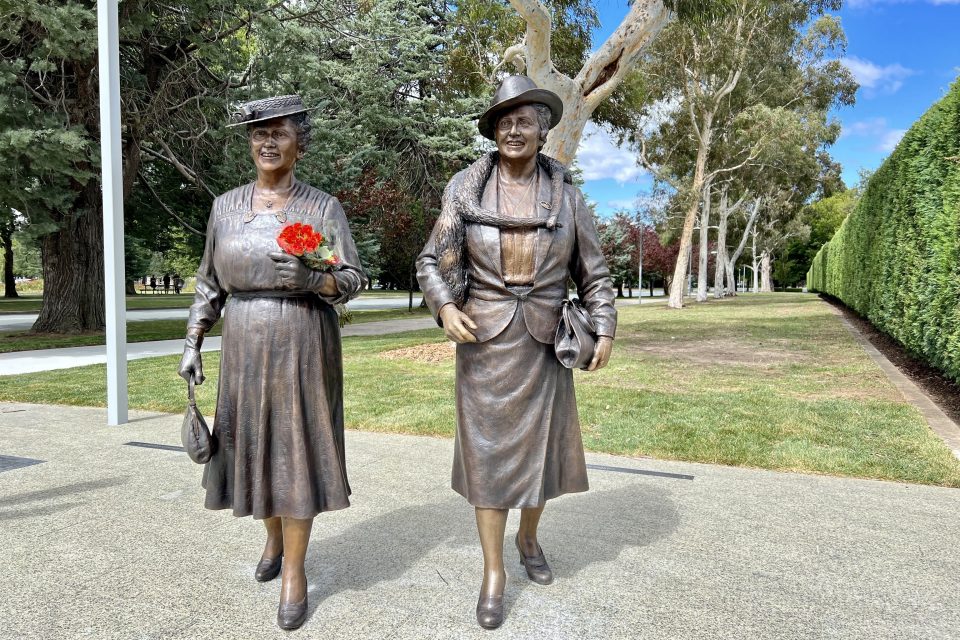
With a start in early 2022, it took six months of work before the clay model was finally ready for the NCA to sign off on. Workers from the bronze foundry then visited her studio to take silicon moulds, which are used to recreate the sculpture in wax.
“Even they remarked how they’ve never made a woman sculpture like this,” Lis says.
“Normally, the female body is either idealised and sexualised or the very opposite – a nun or [the] Madonna – but these women are just like your mum. They also said they were so lifelike, they’d often think there was an actual real person standing there, which would give them a fright.”
Lis finetunes the wax model by adding touches like the texture of the fabric and the ribbon in Dame Dorothy’s hat before more moulds are made, and the hot liquid metal is poured in. The wax melts away to create hollow bronze sculptures weighing about 200 kilograms each. The seams are filed away and the finished result is rubbed down with a chemical mixture to give lighter and darker shades to different parts.
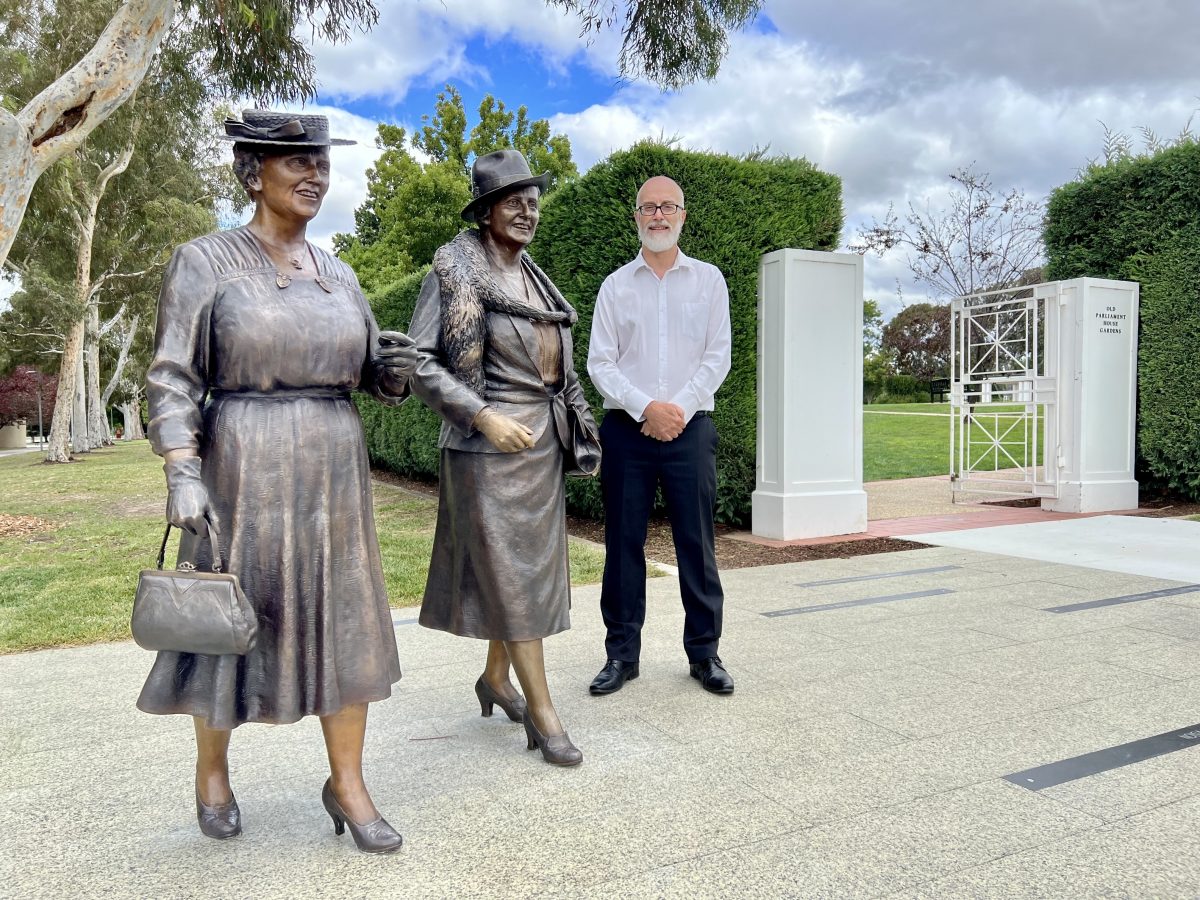
It’s about more than the sculpture to the NCA’s director of design and construction, Rob Tindal. Photo: James Coleman.
So that’s the sculpture, but while all this is going on, the NCA’s director of design and construction, Rob Tindal, is busily preparing the site. There’s equal attention to detail here.
“My objective is to go beyond simply making a sculpture,” he says.
“It’s about place-making – claiming this space for the purpose of this commemoration.”
In practice, this meant ripping up the existing footpath and replacing it with a wider patch of custom pavers, subtly tinged green as not only a “dialogue with the grass” but also a nod to the sculpture’s position on the House-of-Representatives side of Old Parliament House. Plaques were then embedded into these, each one containing different words or phrases that “define characteristics common to both women”.
“The idea was to drop something into the pavement that provided a bit more of a sense of the women’s dynamism,” Rob says.
“That was a case of researching and coming up with phrases or individual words and then taking that to the families for their thoughts.”
Rob says he could go on with a list of issues that reared their head over the three-year process, but both he and Lis agree, “it’s fantastic to see it all done”.
“That’s what you do it for – to get to the end when it becomes part of the national capital’s story.”
The sculpture of Dame Dorothy Tangney and Dame Enid Lyons can be found near the entrance to the Rose Gardens at Old Parliament House.












